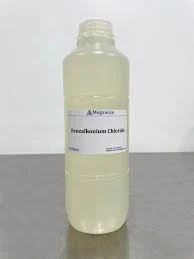Exploring the Applications and Safety of Chloromethyl Isothiazolinone in Modern Products
Chloromethyl Isothiazolinone A Comprehensive Overview
Chloromethyl isothiazolinone (CMI) is a synthetic compound widely recognized for its potent biocidal properties, making it a crucial ingredient in various industrial and consumer products. Its unique chemical structure allows it to effectively combat bacteria, mold, and yeast, thus ensuring the quality and longevity of products across multiple sectors.
Chemical Composition and Properties
CMI is part of the isothiazolinone family, which are heterocyclic compounds characterized by a five-membered ring containing sulfur and nitrogen. The presence of the chloromethyl group enhances its antimicrobial efficacy, allowing it to function effectively even in low concentrations. Typically, CMI is used in combination with another isothiazolinone, methylisothiazolinone (MIT), to create a broad-spectrum preservative system. This combination is particularly effective in preventing the growth of fungi and bacteria, thus safeguarding products such as paints, personal care items, and household cleaners.
Applications of Chloromethyl Isothiazolinone
The versatility of CMI extends across numerous industries. In the cosmetic and personal care sector, it is commonly utilized as a preservative in shampoos, lotions, and creams. By inhibiting microbial growth, CMI helps to maintain product integrity and prolong shelf life, although its use has sparked some controversy due to potential sensitization and allergic reactions in sensitive individuals.
Moreover, CMI finds applications in the formulation of industrial products, including adhesives, coatings, and paper. Its ability to prevent microbial contamination during manufacturing processes makes it essential in maintaining the efficacy of these products, ensuring optimal performance in various conditions.
chloromethyl isothiazolinone

In the field of water treatment, CMI serves as an effective algaecide and biocide, applied to control microbial growth in cooling towers, swimming pools, and wastewater treatment facilities. This is crucial for maintaining water quality and safety, especially in environments where bacteria can proliferate quickly.
Safety and Regulatory Considerations
Despite its beneficial applications, the use of chloromethyl isothiazolinone is not without risks. Several studies have indicated that CMI can cause skin sensitization and allergic reactions, particularly in individuals with predisposed sensitivities. As a result, the European Union has implemented strict regulations concerning its concentration in cosmetic products, limiting its use to minimize adverse health effects.
In many jurisdictions, products containing CMI must carry warning labels and adhere to specified safety guidelines. Manufacturers are increasingly opting for alternative preservatives or reducing the concentration of CMI in formulations to mitigate potential risks while still ensuring product effectiveness.
Future Trends and Alternatives
As consumer awareness surrounding chemical ingredients grows, the demand for safer and more natural alternatives to synthetic preservatives, such as CMI, is on the rise. This shift has prompted researchers and manufacturers to explore various natural preservatives derived from plants and other organic sources. Ingredients like essential oils, phenolic compounds, and probiotics are being studied for their potential to offer antimicrobial protection without the associated risks posed by synthetic options.
In conclusion, chloromethyl isothiazolinone is a potent biocide with invaluable applications across a variety of industries. While its effectiveness in preserving products is well-documented, growing concerns regarding safety and regulatory compliance necessitate a careful approach to its use. As the landscape of consumer preferences shifts towards more natural solutions, the future may hold a significant transformation in the role of CMI and its alternatives in the marketplace. The challenge will be to balance efficacy with safety, ensuring that products remain both effective and safe for consumers.
-
The Power of Isothiazolinones in Modern ApplicationsNewsMay.08,2025
-
Flocculants in Water TreatmentNewsMay.08,2025
-
Flocculants and Chemical Solutions: What You Need to KnowNewsMay.08,2025
-
Flocculants and Chemical Solutions: A Growing IndustryNewsMay.08,2025
-
Essential Chemicals: Polymaleic Anhydride and MoreNewsMay.08,2025
-
Acrylic Polymers: Essential Solutions for IndustryNewsMay.08,2025





